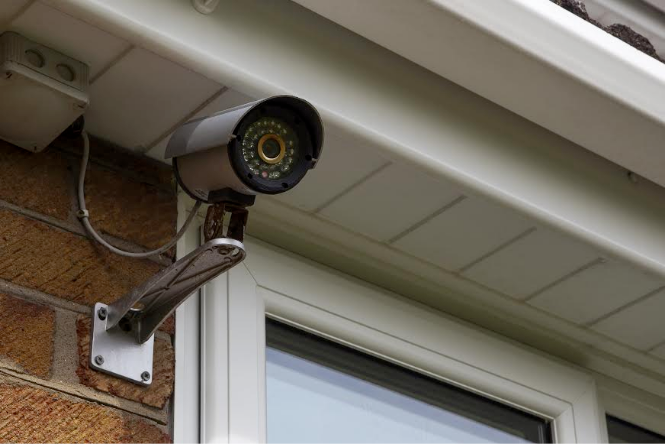Homes, businesses, and public places need security cameras the most. However, the success of a security camera system largely depends on where the cameras are placed. This guide provides important tips for optimal security camera placement to improve surveillance and keep people safe.
1. Identify Critical Areas:
It is important to understand which areas need to be monitored before installing security cameras. Entrances, driveways, parking lots, sidewalks, and valuable areas are some examples of such areas. Conduct a thorough security assessment to identify where threats could arise and make sure everything is covered.
2. Doors and Exits:
Place cameras at entrances and exits to capture clear video of people entering and leaving the building. This is necessary to detect possible intruders, monitor visitor behavior, and make the entire place more secure. For the best facial recognition results, place your camera where people can see it.
3. Edge Protection:
It is important to secure the exterior of your property. Place cameras on the perimeter to detect and deter potential threats before they reach the main building or facility. This acts as an early warning system to prevent people from entering without permission.
4. A Quiet Place:
To get clear and detailed images, make sure the camera is placed in a well-lit area. If there isn’t enough light, photos can become blurry or useless. For low-light locations, you may want to add more lighting or use a camera with night vision technology.
5. Blind Spots:
Find blind spots where the camera may not be able to see clearly and eliminate them. Weak points can include corners, alcoves, and places where buildings or landscaping obstruct the view. To eliminate blind spots and get full coverage, combine cameras with different viewing angles.
6. Pressure Points:
Pay attention to places where crime is most likely to occur, such as windows, back doors, and hard-to-reach places. To improve overall security, you should always keep an eye on these weaknesses.
7. Height Placement:
Consider the best height to place your camera. Place the camera out of reach of people, but low enough that you can see people’s faces. Eight to ten feet above the ground is a good height.
8. Show Things from Multiple Angles:
Position cameras so that they capture a wider view. Overlapping coverage ensures no area is missed, making it difficult for would-be thieves to escape.
9. Observe the People Inside:
Focus on high-traffic areas, such as hallways, entrances, and common areas, to improve indoor safety. You may also consider placing cameras near valuables, private information, or places where people could break in without permission.
10. Safety in Bad Weather:
If you need to monitor an open space, choose a camera that is suitable for outdoor use. Weather and vandal-resistant cameras are necessary to ensure that they work properly even in bad weather and when someone tries to interfere with them.
11. Privacy Concerns:
When installing cameras, especially in public places, adhere to privacy laws and regulations. Do not point cameras directly at adjacent properties or areas where people have a right to privacy.
12. Camera Resolution and Quality:
Invest in a high-resolution camera to get clear, detailed images. Higher resolution makes it easier to identify people and makes the surveillance system work better overall.
13. Connect the Camera:
Think about how your camera connects to other devices. Wireless cameras give you more placement options, but they can be prone to interference. Although wired cameras provide a more stable connection, they may require more work to set up.
14. Ongoing Maintenance:
Create a regular maintenance schedule for your cameras to ensure they stay in good condition. Clean your lenses, ensure there are no loose connections, and regularly update the firmware to patch security holes so your device works better.
15. Regular Inspection:
By regularly checking the functionality of your security cameras, you can quickly identify and resolve any problems. Test shots should be taken, camera angles checked, and all features tested to ensure they work properly.
FAQs
1. Why is it important to install security cameras smartly?
The installation of security cameras should be planned to provide comprehensive surveillance coverage. It makes things safer by focusing on key areas and eliminating blind spots. It helps detect potential threats and deter criminal activity.
2. What is the area that needs the most attention?
Entrances, exits, driveways, parking lots, walkways, and high-value areas are all examples of critical areas. Conducting a safety assessment can help you find these places and develop a comprehensive monitoring plan.
3. How should the cameras be placed at the front and back doors?
Eye-level cameras should be installed at entrances and exits to better capture faces. This ensures that people entering or leaving the building are correctly identified.
4. What is the focus of perimeter security?
Perimeter security helps detect and stop potential threats before they reach the main building or facility. As an early warning system, it can give you valuable time to respond to unauthorized access attempts.
5. What should be paid attention to if a room is well-lit?
To get clear, detailed images, the camera should be placed in a well-lit area. For locations with low light, you can use additional lighting or a camera that can see in the dark.
6. How to eliminate blind spots?
Finding and repairing areas of poor visibility is one way to eliminate blind spots. To get full coverage and eliminate possible weak spots, combine cameras with different viewing angles.



